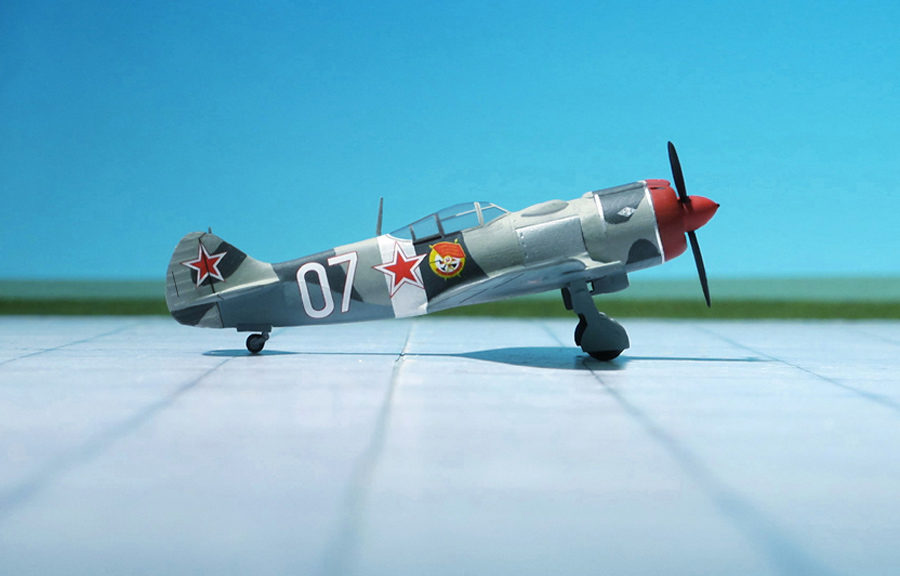TYPE: Fighter
ACCOMMODATION: Pilot only
POWER PLANT: One Shvetsov M-82FN radial piston engine, rated at 1,960 hp
PERFORMANCE: 403 mph at 20,505 ft
COMMENT: The Lavochkin La-5 was a Soviet fighter aircraft of World War II. It was a development and refinement of the LaGG-3, replacing the earlier model’s inline engine with the much more powerful Shvetsov Ash-82 radial engine. During its time in service, it was one of the Soviet Air Force’s most capable types of warplane, able to fight German designs on an equal footing.
The La-5’s heritage began even before the outbreak of war, with the LaGG-1, a promising yet underpowered aircraft. The LaGG-3 was a modification of that design that attempted to correct this by both lightening the airframe and fitting a more powerful engine. Nevertheless, this was not enough, and the lack of power remained a significant problem.
In early 1942 the LaGG-1 and -3’s designer Vladimir Gorbunov attempted to correct this deficiency by experimentally fitting a LaGG-3 with the more powerful Shvetsov Ash-82 radial engine. Since the LaGG-3 was powered by an inline engine, they accomplished this by grafting on the nose section of a Sulhoi Su-2 (which used this engine). By now, the shortcomings of the LaGG-3 had caused Lavochkin to fall out of Joseph Stalin’s favour, and factories previously assigned to LaGG-3 construction had been turned over to building the rival Yakovlev Yak-1 and Yak-7. The design work, which required that the LaGG-3 be adapted to its new engine and still maintain the aircraft’s balance, was undertaken by Lavochkin in a small hut beside an airfield over the winter of 1941–1942, on a completely unofficial basis.
When the prototype took flight in March, the result was surprisingly pleasing – the fighter finally had a power plant that allowed it to perform as well in the air as it had been supposed to on paper. After flying, the LaG-5 (the change in name reflecting that one of the original LaGG designers, Mikhail I. Gudkov, was no longer with the program), Air Force test pilots declared it superior to the Yak-7, and intensive flight tests began in April.
The prototype was put in mass production almost immediately in factories located in Moscow and in the Yaroslav region. Design changes for main production La-5 models included slats to improve all-round performance. While still inferior to the best German fighters at higher altitudes, the La-5 proved to be every bit their match closer to the ground. With most of the air combat over the Eastern Front taking place at altitudes of under 16,404 ft, the La-5 was very much in its element.
Further refinement of the aircraft involved cutting down the rear fuselage to give the pilot better visibility, making this version the La-5F. Later, a fuel-injected engine, a different engine air intake and further lightening of the aircraft led to the designation La-5FN that would become the definitive version of the aircraft. A full circle turn took 18–19 seconds. Altogether, 9,920 Lavochkin La-5s of all variants were built, including a number of dedicated trainer versions, designated La-5UTI. Very late La-5FN production models had two 20mm Berezin B-20 cannon installed in the cowling in place of the heavier two 20mm ShVAK (both were capable of a salvo weight of 3.4 kg/s). Further improvements of the aircraft would lead to the Lavochkin La-7.
A number of La-5s continued in the service of Eastern Bloc nations after the end of WW II (Ref.: 24).












